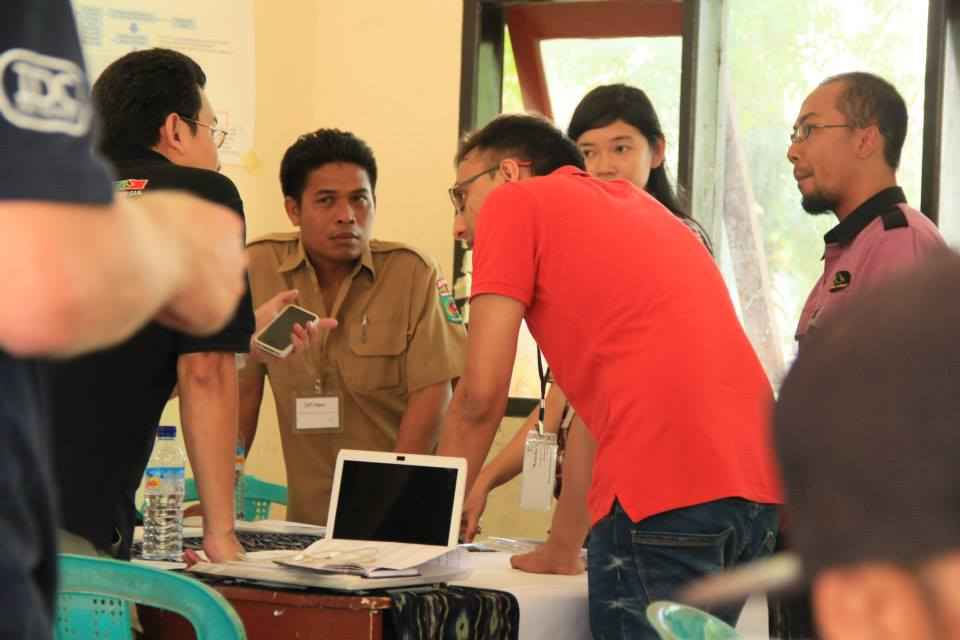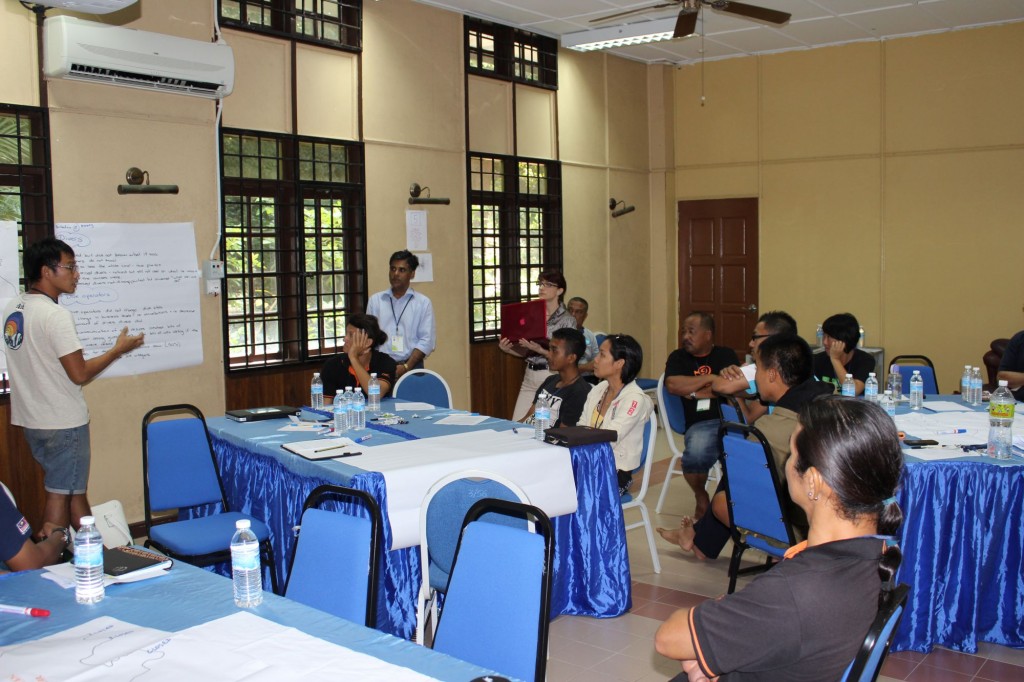Temporary Reef Site Closures During Coral Bleaching Thermal Stress
Location
Malaysia (Kedah, Terengganu and Pahang states); Thailand (Trang, Satun, Chumphon, Krabi and Phnag Nga provinces)
The challenge
From March to September 2010, a thermal stress event occurred across Southeast Asia. Satellite-based monitoring tools produced by NOAA’s Coral Reef Watch (CRW) program were used to describe thermal stress patterns in the region. These tools were used to help local agencies respond to the potential bleaching. Predicted coral bleaching was confirmed through in situ observations undertaken by the Department of Marine Park Malaysia (DMPM), Thailand’s National Parks, Wildlife and Plant Conservation Department (DNP), university researchers, industry partners, and other stakeholders.
Undertaking practical, timely management actions before and/or during thermal stress events can reduce negative impacts on corals and reef ecosystems. Such actions include restricting potentially stressful activities on the reef such as construction, water sports (e.g., diving, snorkeling), and fishing, before, during, and after a bleaching event. In addition, enhancing overall reef health and condition (resilience) can help corals to resist environmental stress and recover more easily.
Actions taken
In Malaysia, initial reports by government, university, NGO, and industry stakeholders confirmed bleaching had affected 60-90% of corals in the region. In response, DMPM closed 12 out of 83 dive sites within Malaysian national marine parks to divers and snorkelers from July 2010 until the close of the tourist season in October 2010. The onset of the monsoon season extended this closure until early 2011. DMPM undertook consultation with key reef stakeholders and press releases by the Director General of DMPM publicly communicated the closures and the reasons for them. These were supported by comments from NGOs (including ReefCheck Malaysia), along with calls for research and action to enhance understanding of and protection for reefs.

Discussing initiatives to support ecological and social resilience, Gili Islands, Indonesia. Photo © James Tan Chun Hong
In Thailand, thermal stress was greater than in Malaysia, and resulted in over 80% of corals impacted at all sites. In response, and following a recommendation from the Department of Marine & Coastal Resources (DMCR), the DNP closed dive sites in national parks in December 2010. Eighteen popular dive sites within seven of 26 national parks on both sides of the peninsula were closed for 6-18 months to allow coral damaged by bleaching to recover. During this period, public awareness of marine conservation was promoted through local media. In the Gulf of Thailand, bleaching impacts were lower and bleached coral became a tourist attraction which provided additional opportunities for outreach and education. In addition to the site closures, authorities monitored coral status during the closures, increased enforcement, and also increased anchoring sites at locations unaffected by the closures to reduce boats damage to reefs.
How successful has it been?
In Malaysia, DMPM surveys of affected reefs in October 2010 and in the early months of 2011 found that corals had mostly recovered, with only a loss of ~5% of corals. Based on these results, the temporary closures were officially lifted in June 2011 for the usual beginning of the tourist season.
In Thailand, averaged across all reef sites, less than 5% of the damaged coral had recovered by 2011. Site closures were therefore extended to 18 months at some sites. The amount of young coral found suggested that while reef recovery through recruitment was occurring in some areas; it was dependent on the health of upstream reefs which provided the necessary coral larvae for recovery. These results demonstrated the importance of considering the ecological connectivity between healthy and damaged sites to better understand recovery prospects and patterns.
Tourism industry responses to the closures in Thailand were varied. The Phang Nga Tourism Association sought to cooperate with government efforts to protect marine life and to encourage collaboration between government and private tourism operators. Phuket and Andaman diving communities expressed concern that the closures would lead to overcrowding at other popular sites outside marine parks, such as around Phuket. In response, efforts were made in some locations to cap tourist numbers and/or to limit visits to during high tides (to reduce accidental contact with corals). There was also concern regarding follow-on impacts of the closures on the tourism industry, such as reduced accommodation bookings. General consultation with industry partners and stakeholders continued through DMCR and DNP, including through engagement programs such as Strengthening Andaman Marine Protected Area Networks (SAMPAN) and in partnership with research organizations (e.g., the Phuket Marine Biological Centre).
Stakeholder learning workshops were held in multiple locations in Malaysia, Thailand and Indonesia during 2013 to identify gaps in scientific knowledge and build capacity for supporting social and ecological resilience to future bleaching events. Assessing the effectiveness of closures during coral bleaching events on promoting coral survival and reef recovery was identified as a key future research task through this study. Workshop participants acknowledged that selective site closure or reduction in usage could be beneficial for reefs, but also recommended implementing restrictions other than site closures during bleaching events. Other key responsive actions identified through the workshops included: (i) improving engagement, coordination, and communication between stakeholders about coral reef management issues; (ii) implementing education and outreach programs to raise awareness, particularly for snorkelers and divers; (iii) enforcing existing rules, particularly those related to marine parks and fisheries; (iv) improving communication and coordination during bleaching events by developing and/or socializing Bleaching Response Plans and forming Response Committees; and (v) developing and implementing codes of conduct and certification programs for divers, dive operators, snorkel guides, and tourism businesses.

Small group reporting on potential management actions during bleaching events. Photo © James Tan Chun Hong
Lessons learned and recommendations
- Establish and maintain effective stakeholder networks. Having these in place prior to disturbance events can establish trust relationships if/when responsive actions become necessary. In the event of mass coral bleaching, coherent and guided actions are needed (e.g., through the Malaysian National Coral Bleaching Action Committee that was established with various stakeholders following the 2010 event or through Thailand’s National Coral Reef Management Plan).
- Use predicted bleaching conditions from NOAA Coral Reef Watch tools to make proactive management decisions and support communication efforts.
- Prevent coral damage from snorkeling in the shallow reefs before, during and after disturbance events. This may involve establishing alternative sites or only visiting reefs during high tides.
- If temporary closure of diving sites is deemed necessary, clear and early communication of actions with industry stakeholders is important. Ongoing communication through any period of closure is also important; this includes informing the public and tourists concerning status of coral bleaching.
- Reduce sediment load onto coral reefs from coastal development, wastewater discharge from boats and land-based activities.
- Training and capacity building (e.g., in appropriate coral bleaching survey techniques) is important for local marine park rangers and other specialist monitoring groups.
- Together with network partners, conduct research and monitoring for coral conservation and restoration. For example, this can inform the success of temporary closures on coral health.
- Develop effective mechanisms for response project implementation under national coral reef management plans. This may include providing sufficient capacity and funding needs to relevant government agencies for monitoring and enforcement.
- Support multi-national reef conservation efforts to enhance recovery of disturbed reefs.
Funding summary
Rapid response assessment (funding sources and partners):
CSIRO Wealth from Oceans Flagship
NOAA Coral Reef Watch Program
NOAA Coral Reef Conservation Program
Australian Government’s Department of Environment, Water, Heritage and the Arts (now the Department of the Environment)
The Nature Conservancy
Universiti Malaysia Terengganu
Prince of Songkla University
Macquarie University
Stakeholder learning workshops (funding sources and partners):
Asia-Pacific Network for Global Change Research
CSIRO Wealth from Oceans Flagship
NOAA Coral Reef Watch Program
NOAA Coral Reef Conservation Program
Reef Check Malaysia
Universiti Malaysia Terengganu
Department of Marine Park Malaysia
Prince of Songkla University
WWF-Thailand
Department of Marine and Coastal Resources, Thailand
J.W. Marriott, Phuket, Thailand
Reef Check Indonesia
Coral Reef Alliance
Conservation International Indonesia
Wildlife Conservation Society – Indonesia
Lead organizations
Department of Marine Park Malaysia
National Parks, Wildlife and Plant Conservation Department, Thailand
Department of Marine & Coastal Resources, Thailand
Universiti Malaysia Terengganu
Partners
NOAA Coral Reef Watch
Reef Check Malaysia
Resources
Top dive spots closed due to coral bleaching
Coral bleaching in Thailand: 18 dive sites closed to save coral reefs
Dive sites to remain closed so bleached coral may recover
Building Capacity for Socio-ecological Resilience to Coral Bleaching Events & Climate Change in Indonesia, Malaysia, and Thailand
First observed severe mass bleaching in Malaysia, Greater Coral Triangle
South-East Asia Coral Bleaching Rapid Response
Impacts of Coral Bleaching, Recovery and Management in Thailand




